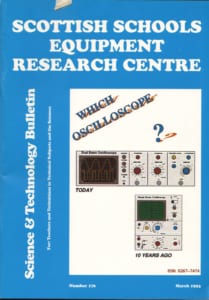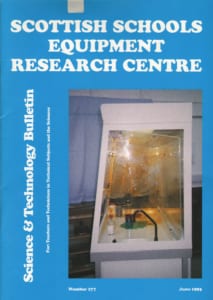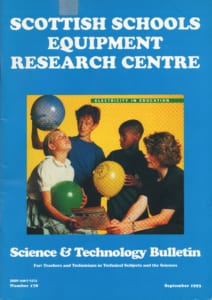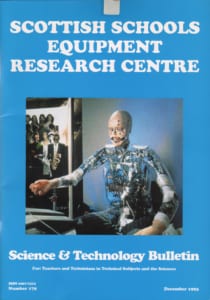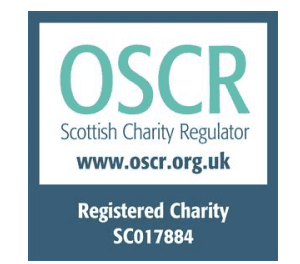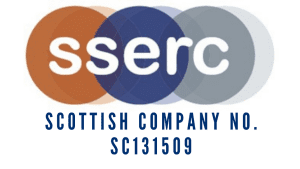The page numbers refer to the pages in the pdf. (The numbers in brackets are those given in the actual bulletin)
3(1) Opinion
A question of standards
4(2) Introduction
Notice: FE colleges; Diary Dates: Technology Conference, TTA Annual Meeting, Science and Technology Festival, SSERC Courses; From your own correspondence
5(3) Readers’ Letters
A plea for more correspondence. Letters on: Hazard warning labels, Plasters and allergies, Weil’s disease, Clinistix, Amplifier gain,
8(6) Safety Notes
Guidance on new regulations, Electrical safety problems: – Radford labpack, Ambiguous connectors, Shaper saws,
10(8) Laser safety and laser diodes
Several schools have enquired about laser diodes. We address the safety issues here in this part of the Bulletin and give some technical information and buying advice in a later section.
13(11) Making necessary links
An account is provided of some basic linkage mechanisms and suggestions made as to their usefulness for project work and the improvement of technological competence at upper primary and lower secondary levels.
19(17) Oscilloscopes
This article describes the general features which are available on oscilloscopes and gives advice on their relevance for schools. We also describe and compare the performances of five single trace and twelve dual trace oscilloscopes, and give buying advice thereon. The need for the pupil oscilloscope, or instruments with minimalist controls is recognised.
27(25) Laser diode modules
This note provides a buyers’ guide to laser diode modules (LDMs) and discusses whether they are of interest to schools.
30(28) Trade news etc
Balance burn out, CD-ROMs for science courses, Higher physics resources, Chemistry project prize
32(30) Surplus equipment offers
The page numbers refer to the pages in the pdf. (The numbers in brackets are those given in the actual bulletin)
3(1) Opinion
An illuminating question
4(2) Safety Notes
CSYS microbiology: the majority of Scottish EAs have either adopted, or adapted, the Strathclyde documents and issued them as their own Code of Practice (CoP). Any significant clash with the recommendations of the Biology Panel of the Scottish Examination Board is a potentially serious problem. Fortunately however, those difficulties which have been indicated are more apparent than real. Few cannot be resolved by twin applications of the principles of COSHH and common sense.
8(6) A robot for the teacher?
A survey of users Part I (Bill Lindsay) – This is the first in a short series of articles on robots and related devices intended for use in technology education at school level. The results of a survey of schools are summarised. These provide some insight into: the kinds of robotics equipment used in Scottish secondary schools; teachers’ perceptions of the overall usefulness of specific models of teaching robot and of factors which seem to limit their usage.
14(12) Recirculatory fume cupboards
The general features of recirculatory fume cupboards and provides technical and other guidance on their selection and use, for schools and non-advanced further education. The results of a recent testing and evaluation programme on four models are summarised.
24(22) Monitoring of recirculatory filters
Sulphur dioxide has been routinely used as an acidic gas with which to challenge the relevant parts of the compound filters of recirculatory fume cupboards. Unfortunately the gas is no longer available in the relatively cheap form of a liquid under pressure in a syphon made largely of aluminium. We offer alternatives.
26(24) Finite-element analysis
The article introduces finite-element analysis, which is a mathematical method for modelling
physical processes in complex structures. The method is applied to the spreading resistor R9 in the Semiconductor Materials Schools Chip in order to obtain a value for sheet resistance.
33(31) Announcements
SSERC publications and software, – CSYS Physics Experimental Guide, – Chemical Modeller: new version
The page numbers refer to the pages in the pdf. (The numbers in brackets are those given in the actual bulletin)
3(1) Foreword
Sponsorship: ScottishPower
4(2) Opinion
5(3) DNA, dinosaurs and dangers
Laboratory acquired infections – A number of school practical activities are re-assessed in the light of current knowledge of likely degrees of risk of acquiring certain infections from materials of living origin.
11(9) Electrothermal heating mantles
We have received notice from Electrothermal Engineering Limited through one of their distributors, Philip Harris, of a condition that can arise with certain controlled heating mantles
12(10) Lead ions and enzymes
A technique for monitoring what we thought at the time was the effect of lead ions in inhibiting the action of the catalase.
16(14) To measure the length of a metre stick
If laser light is modulated at 5 MHz by a signal from a quartz crystal oscillator then we can measure the time in nanoseconds taken by the light beam to travel an integral number of metre stick lengths. Because the velocity of light is exactly defined, we can obtain a value for the length of a metre stick.
24(22) Digital Multimeters
In this report we look at a batch of 14 digital multimeters
30(28) Plastic rulers
Ruler scales and accuracy.
32(30) That old flame again
Flame tests – the modification of a Bunsen burner so that an aerosol of a metal salt is drawn in through its air intake.
34(32) Electrolysis of melts
A substitute for a lead salt in the electrolysis of a melt, thus reviving a use of potassium iodide.
36(34) Fun with neodymium – – Lenz’s Law and Newton
If you drop a neodymium magnet down a copper tube, it gently floats to earth, as in a fairy glide, tinkling each time it touches the not quite vertical tube. That it takes this hunk of alloyed iron 10s to fall 2 m is astonishing. The music it makes is magical.
38(26) Surplus equipment offers
41(39) Announcement Software copyright
42(40) Trade News
BEEA Exhibition, BEEA Exhibition, Protective equipment, Microbiology materials, Introductions to magnifiers and microscopes
The page numbers refer to the pages in the pdf. (The numbers in brackets are those given in the actual bulletin)
3(1) Foreword
Sponsorship by BESA, Education Scotland 1994 – Exhibition and Seminars
4(2) Opinion
Inexpert systems
5(3) Introduction
Dates for your diary (Education Scotland ’94, Science festival, ASE Scottish Region Annual Meeting), SSERC courses, DNA review postponed, SSERC publications
6(4) Labelling regulations
New regulations – The Chemicals (Hazard Information and Packaging) Regulations 1993 [2] came into force on the 1St September 1993. They replace and extend the earlier Classification, Packaging and Labelling Regulations (CPL) and are intended to operate much along the same lines.
7(5) Management (de-?) regulations
There is soon to be a major UK programme of deregulation in the field of health and safety. We discuss the possibilities.
8(6) More on enzymes – Urease
This article concentrates on problems in a suggested biology practical wherein urea concentrations are assayed using urease to hydrolyse the urea into ammonia and carbon dioxide and thereafter titrating against acid.
10(8) More on enzymes – Diastase
Diastase is not one enzyme but a mixture of two different forms – alpha-amylase and beta-amylase. Both act on and hydrolyse starch of which coincidentally there are two forms. It seems to have come into fashion again after a number of EAs banned, or teachers abandoned, the use of human saliva as a source of amylase
13(11) Pneumatics – a neglected technology?
In school technology devices which are driven by controlled flows of compressed air – pneumatic devices – seem but poor cousins of electrically powered and electronically controlled systems. This short article attempts to give the lie to such a view of pneumatics. It describes a number of modern, industrial and commercial applications of compressed air devices. They are intended to assist teachers provide pupils with a more balanced view of pneumatics technology applications.
18(16) Computer assisted drawing: SSERC Graphics Collections CD-ROM
This article has been set in what some may see as hypertext. It describes the features and benefits of our graphics and data collections on compact disc, read-only memory (CD-ROM). Also explained are some of our own, in-house, applications of this vast library of objects, text and data.
22(20) Robotics systems – a survey of users part II (Bill Lindsay)
The pupils’ views. This article follows on from an earlier account on teachers’ perceptions of robotics systems used for teaching purposes.
26(24) Experimental errors
The article provides background on the sources and possible treatment of experimental errors in senior school practical and project work. Terms are defined and thus distinguished. Some approaches and short-cuts that may not be well known are described.
36(34) Equipment Offers

